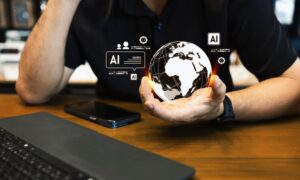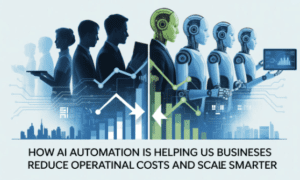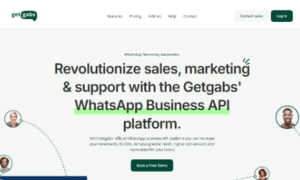Introduction: A Digital Revolution in Disability Employment
Across Australia, a quiet revolution is underway. Technology is breaking down barriers and opening new employment opportunities for people with disabilities. For many years, individuals with physical, sensory, or cognitive impairments have faced persistent challenges when seeking meaningful employment. However, the rise of digital tools, remote work environments, and assistive technologies is reshaping the employment landscape.
According to the Australian Institute of Health and Welfare, only around 53% of working-age people with disability are employed, compared to 84% of those without disability. That’s a significant employment gap — but thanks to digital innovation, this gap is finally narrowing. Technology is no longer just about convenience; it’s becoming a lifeline to equal opportunity.
The Employment Gap Challenge in Australia
Despite policies supporting inclusivity, many Australians with disabilities continue to experience lower employment rates, underemployment, or a mismatch between skills and opportunities. Stigma, inaccessible work environments, and outdated recruitment processes remain substantial hurdles.
Before the COVID-19 pandemic, many workplaces required physical presence, rigid schedules, and face-to-face interactions — aspects that unintentionally excluded people with mobility issues, neurodivergence, or chronic conditions. The global shift to remote work during the pandemic revealed what was possible: flexible schedules, virtual meetings, and productivity measured by output, not hours in an office. This shift has opened up new, lasting possibilities for inclusive employment.
Technology as an Equalizer
Accessible Workplaces Powered by Digital Tools
Digital transformation has enabled more inclusive workspaces where accessibility is prioritized from the start. Virtual collaboration tools like Microsoft Teams, Zoom, and Slack provide flexible communication channels. Screen readers, real-time transcription, and voice recognition software allow people with visual, hearing, or motor disabilities to engage in meetings and contribute in real-time.
Remote Work: A Game Changer
Remote work removes the geographic and transportation barriers that often limit employment options. A person living in a rural town or managing chronic pain can now work from home with just a stable internet connection. Cloud-based platforms and secure VPNs let employees access files and systems from anywhere, making roles in IT, marketing, finance, administration, and content creation more accessible than ever.
Assistive Technology Enhancing Capabilities
Today’s assistive tech is not just functional—it’s empowering. Voice-controlled devices, adaptive keyboards, eye-tracking software, and AI-powered accessibility tools are enabling people to perform complex tasks independently. These technologies adapt to the user, not the other way around, making them more intuitive and impactful.
Australian Organizations Leading the Way
One standout example in this inclusive tech-driven movement is Good Sammy, a Western Australian organisation dedicated to empowering people with disabilities through employment and training programs. Their approach blends hands-on job training with digital platforms, offering real-world experience and modern skills that match today’s job market.
Through Good Sammy’s initiatives, many individuals have accessed tailored support, vocational training, and direct connections with employers. Their website and programs highlight how community organisations can harness tech to create genuine pathways to employment.
To explore these opportunities further, you can Learn more about jobs for people with disability in Perth here.
These programs don’t just help people find jobs—they build confidence, independence, and skills that last a lifetime.
The Future of Inclusive Employment
AI and Machine Learning
As artificial intelligence evolves, it brings promising tools that will shape future workplaces. AI can now analyze resumes without bias, suggest job accommodations, and provide real-time support like automated captioning or communication aids. Chatbots and smart assistants also help streamline onboarding and training.
Blockchain for Skills Verification
Blockchain isn’t just about cryptocurrency—it’s also transforming credentialing systems. With secure, verifiable digital credentials, people with disabilities can easily share their certifications and experiences. This reduces paperwork and streamlines hiring, especially for those with non-traditional education or work histories.
Virtual Reality for Job Training
VR and AR platforms are being used to simulate workplace scenarios, offering safe and immersive training environments. Whether it’s customer service, logistics, or technical skills, learners can practice at their own pace, with instant feedback and low pressure.
The Economic Value of Inclusive Employment
Research consistently shows that diverse teams outperform homogeneous ones. People with disabilities bring unique perspectives, problem-solving skills, and creativity that enrich the workplace. According to a report by Deloitte, companies with inclusive hiring practices enjoy 22% lower turnover rates and 28% higher revenue.
Government initiatives such as the National Disability Employment Strategy and the Employment Assistance Fund (EAF) further support businesses willing to adapt and accommodate. Through funding and advisory services, these programs reduce costs and risks for employers, making inclusive hiring both practical and profitable.
A New Workforce Culture
There’s a growing recognition that workplace flexibility benefits everyone, not just those with disabilities. Job sharing, compressed work weeks, and outcome-based performance metrics are becoming standard in progressive Australian businesses. These trends promote a healthier, more inclusive work culture that values contribution over conformity.
Conclusion: A More Inclusive Digital Future
As technology continues to evolve, the opportunities for people with disabilities in Australia will only grow. But it’s not just about the tools—it’s about commitment. Employers, policymakers, and communities must work together to ensure that inclusion isn’t an afterthought, but a foundation.
Organizations like Good Sammy are proving that when technology is paired with purpose, the results can be life-changing. They are showing what’s possible when innovation is used to uplift and include.





























